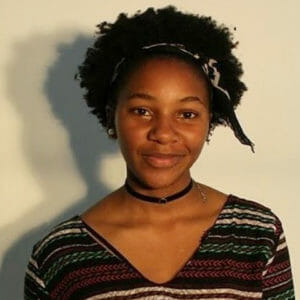Written by Nosizo Lukhele
As an undergraduate student at Bennington College, which highly cultivates students to be multifaceted, I cannot imagine a better way to have spent the six weeks dedicated to my fieldwork term than at the Center for Gender Equity in Science and Technology and Center for Biodiversity Outcomes at Arizona State University.
Being at the centers and seeing researchers and staff with expertise in research, STEM, computer science, curriculum and education, and other interdisciplinary areas work together to manifest a project that showcases the transdisciplinary nature of STEM was nothing short of inspirational.
Initially, I applied to this job thinking, “Wow! That is a really long name for a job,” — not knowing much about the specific work each center is engaged in. I was very curious about their work and how I could apply new knowledge to my own understanding of research and STEM. Now that my time at the centers is over I realize the experience was worth every syllable of that job title and more.
Working at the centers empowered me as an emerging researcher and opened my mind to new ways of applying the knowledge I acquire daily. I had the privilege to meet with people who are experts in so many different fields. Being from the Kingdom of Eswatini, where intersectionality of disciplines is not quite as popular, I applied for this job opportunity with eagerness and tenacity to learn all about drawing lines and making relationships between different areas.
I had the privilege to be assigned a task where I had to create a project which blends expertise on biodiversity conservation with science and technology — in other words, it was my job to imagine activities or a program that helps girls of colour learn about biodiversity conservation through computer science and STEM engagement.
The objective of this project was to identify intersections in thought and complementarity among the centers and their respective fields of study that could inspire a curriculum for girls of colour to learn how to apply STEM thinking to challenges faced in their communities.
Hence, both centers envisioned working together to serve young women of colour and teach them ways to shape technology in a way that is mindful of what is happening in the environment with the loss of biodiversity but also in ways that are relevant to their communities, interactive, and that fosters leadership skills, group learning, and team collaboration.
At the conclusion of my time at ASU, I proposed a project on the use of virtual reality or augmented reality in the classroom. Although I had no well-versed knowledge of the nature of partnering with other departments and programs, my time at ASU encouraged me to not shy away from pitching that idea.
Words cannot express how meaningful this experience was to me and my identity as a woman of colour being in a place where work is done, primarily by other women of colour, to empower other women like me!
